Egypt Suez Canal plus The valley of the Kings and more
22 January 2023 at 06:00
Presently heading towards the Suez Canal, hopefully we will be going through tomorrow all being well.
Had a security briefing from the Captain this morning, then we had a rehearsal drill.
Everyone had to go to their cabin and seat themselves in the corridor. Away from windows, whilst security crews tested the water cannons on deck and the armed response staff took their places to repel pirates. Although our rendezvous with the floating armoury as not as yet taken place. Normally it will be once we have cleared the Suez and entered the Red Sea. Then our guards will be appropriately armed necessary to repel pirates. Although there doesn’t seem to be too many reports of attacks of late. And l am sure they will concentrate on oil tankers. Not many crew, and a high valued shipment to hold up for ransom.
Addendum
Once we reached the Red Sea, the Royal Navy liaison officer onboard advised us that since the naval security was put in place by concerned nations, Somalian piracy has virtually halted. Especially as this force ensures illegal fishing was eliminated. This being the main reason why most of the local Somalian & Ethiopian fisherman had been pushed into piracy in the first place. Other initiatives had also be put in place to assist the locals.
This in turn has made it unviable for the security services to offer their protection to shipping in the area. Most companies have now moved their companies into other armed security areas of business.
Nevertheless we still expect to have a sail by with at least one Royal Navy vessel.
Entered the Suez Canal quite early, after lifting anchor around 4am. Not that l was aware of it. Awoke at seven to find we were sailing under the freedom bridge. A mist clinging to the water that obliterated all but the mass that towered above.
It wasn’t until later in the morning that the mist cleared, showing us various images on either side of the canal. The East bank was being dredged and widened, with truck’s busily moving the spoils in a constant procession.
Very surprised at the lack of ships both in front and behind us, in fact all we could see is one in front and one behind. Totally different to 2020 when all you could see were dozens & dozens of containerships in front and behind. And once we reached the lake, only approximately six ships could be seen at anchor, compared to hundreds back in 2020.
Wonder if the global recession is having an effect on trade, especially from China and the Far East.

Booked on the Luxor and the Valley of the Kings tour in Egypt. It’s a long day, 13 1/2 hours in total, seven of which are spent on a bus. They also emphasised that we will be in convoy with military guards and plainclothes armed guards on each coach. Mitre importantly, NO comfort stops. So it could take even longer. But decided it would be worth it. It’s unlikely we will be coming back to Egypt in the near future. Especially as we don’t fly.
Two days before the trip received an update on the schedule. The tour had been vastly oversubscribed, so much so, they had to put on more coaches for the 1100 people who wanted to go. From all accounts, between 22 and 24 coaches.
Some organisation to take care of.
They had decided to provide breakfast between 5am and 6, with registration at 6.10, departure shortly afterwards. So alarm set at an unearthly hour. Not helped by revellers returning to their cabins at 1am. Obviously people not needing to get up early. Then again, they might have thought there was no need to go to bed. Just stay up drinking in the bar, sleep on the bus.
Surprisingly enough, managed to demolished a full cooked breakfast. Calories to get me through till lunchtime. A solid mass of fat to be shaken about in the stomach as we travel through the dessert to Luxor.
But first we had to manoeuvre our way through Egyptian security. Sexes split, women one side, men the other, but checked rather haphazardly. Could have sworn that the X-ray operator was fast asleep. Large sunglasses hid the fact that his eyes were closed, but the sound of snoring was a definite giveaway. The walk through machine continually flashed and bleeped, although no one was frisked. It was all for show.
Each coach left once loaded, minus any onboard guards. Soon materialised that we were not in any convoy. A pleasant surprise. Twenty odd coaches together in close formation is a far easier target in my mind. Not that l am a military expert in anyway.
Headed into Safaga, a new town just made up to service the port. At this hour, whilst people were undoubtedly tucked up in their bed, the bus passed through within minutes without any hold ups. We climbed steadily up into the mountains. Another surprise. In my minds eye l expected to travel on a dead straight road through the baron dessert landscape. How wrong could l be. We ascended on twisting roads through a never ending mountain range at a speed that seemed rather excessive. Scarily So. Quickly fastened my seat belt, whilst ensuring my backpack was squashed between torso and the seat in front as a precaution. We overtook everything, lorries, cars, and other buses. Often on blind bends. Eventually relaxed when l realised we were actually on a two lane carriageway/motorway. Noticed a similar road on the other side of the mountains through the odd gap in which we glimpsed the lights of oncoming traffic.
The bus pressed on at a good rate until we ground to a halt at a security road block. One of many during the three and a half hour journey to Luxor. A mixture of armed plain clothed officials and soldiers milling around, checking documents and verifying numbers of passengers and contents within other vehicles. Raised sentry towers had AK47 rifles sticking out through slits in the brick housing. Others were hiding behind metal shields, observing the traffic as it was being searched. You could imagine that baksheesh was being handed out to speed up the transit. Although with security blocks occurring every ten miles or so it could be an expensive game.
The mountains suddenly disappeared, replaced by the low lying Nile valley. And the city of Quena with its lush crops growing on either side of the irrigation canals. Fields were small with what looked like family members tending the crops. Most harvesting sugar beet, then loading onto donkey drawn carts. More modern forms of transport were used, but these were just some form of motorbike that had been adapted to tow a trailer. Often with a child precariously balanced right on top of the swaying sugar beet. Traffic was totally frenetic, a mixture of of heavy lorries, bikes, donkeys, and even camels. All vying for space on the overcrowded roads.
They didn’t have roundabouts. They just turned down a road and then immediately turned across the centre reservation, and back the other way. At first we thought the driver had taken the wrong turn, but it soon became obvious that this was the done thing, the norm.
The guide onboard was very eloquent with his translations into English. Explained why the Kings were buried on the West Bank of the Nile. “The sun god descends and "dies" on the western horizon”.
And pyramids were built in the North because it was flatter and easier to construct. God knows we’re they quarried the stone. But then again, the limestone could have been found locally, as the area around Cairo was under the sea millions of years previously.
Whereas the valley of the Kings, encircled by mountains was chosen for its secluded nature, and it was simpler to mine into the rock and form a tomb than build upon it. Pyramids of the Old and Middle Kingdoms were looted, and so royals of the New Kingdom chose hidden underground tombs in the secluded desert valley to avoid the fate of the ancient pyramids.
He also explained why a lot of statues had their noses broken off. Egyptians believed that statues had a life force. If an opposing power came across a statue it wanted to disable, the best way to do that was to break off the statue's nose and hamper the breathing.
He also spoke about modern Egypt, it’s commerce, schooling and the economy.
Understandably skipped over the looming problem of debt due to the Ukrainian crisis and the cost of oil and grain. Nevertheless it was informative and enlightening. Kept us awake for at least a couple of hours.
Arrive at Luxor and cross over the Nile to the West Bank. Dozens of river cruise boats were lying dormant. Not enough tourists visiting to make it profitable. Especially since Tui stopped selling the location to the mass market. Prior to Covid they had flights out on a daily basis, doing anything from 3 days to 14. It may come good again once we get back to some form of normality. What ever that means in this turbulent world.
It was indeed a long trip, but the the Valley of the Kings were truly amazing.
Initially we stopped at the Sphinxes for a photo opportunity and a stretch of the legs.
Then into the valley of the kings.
Once our guide had handed over our tickets we were free merchants, to head wherever we wished. But first we needed to jump on board the golf carts that whizzed us up to the start of the tombs. But more importantly a comfort break for moiré.
First off we found the tomb of TUT ANKH AMUN, then onto KV 8 Merenptah. Delving down into the tombs, immersed into a world of hieroglyphs, coloured paintings and sculptures. Atmospheric, if it wasn’t for the other thousands of tourists trying to get to the same place and photo the same thing. Nevertheless, truly amazing.

Then the uphill climb to the rear of the site, past new excavations and many other tombs that were sealed and locked off.
Eventually reaching KV 14 Tausert/Setnakht and KV 15 Sety II , both devoid of people, being situated right at the end of the digs, miles away from the most popular tombs which the guides encourage you to see.
We had plenty of time to explore all the passages and rooms. The colour of the drawings were truly amazing, considering they we produced over 3000 years ago.
The workmanship that went into decorating the walls and ceilings, t fantastic. Especially when you realise they didn’t have the benefit of metal tools.
Seth ll in KV 15 was a child king, but the decorations were just as impressive.
Finally we return to visit KV11 Rameses Ill. A steep decent into the depths. Magnificent. Although time was running out, so only a cursory look, before returning to the bus. Definitely need to return, but without time constraints. Just so much to see and absorb. Mind bogglingly beautiful. Words just can’t describe adequately what is before your eyes.
The heat was oppressive, so it was great to get back into the air conditioned bus. From here we retraced our steps and journeyed back over the Nile to Luxor and our lunch stop.
Beautiful hotel, located on the bank of the Nile. The Nile Palace.
The location, cleanliness, service and quality of food exceed all our expectations. As the comment suggest, our sights were set low, but the offerings were definitely five star.
Watered and fed, off we shot to our last stop, the temple of Karnak.
Could not describe in words how fantastic the ruins were. The site is enormous.
Once again shoot off by ourselves, and go to the furthest point and then work our way back. Keeping as much as possible out of the melee of people. There is just so much to take in. Mind blowing.
Have included details that were displayed as we investigate each area. Additions to the temple were added at a tremendous rate, each trying to better their predecessor.
Background
The Temple of Karnak is the largest religious building ever constructed. It was known as Ipet-isu—or “most select of places”—
A city of temples built over 2,000 years and dedicated to the Theban triad of Amun, Mut, and Khonsu.
This derelict place is still capable of overshadowing many wonders of the modern world and in its day must have been awe-inspiring.
The Egyptians believed that towards the end of annual agricultural cycle the gods and the earth became exhausted and required a fresh input of energy from the chaotic energy of the cosmos.
To accomplish this magical regeneration the Opet festival was held yearly at Karnak and Luxor. It lasted for twenty-seven days and was also a celebration of the link between pharaoh and the god Amun. The procession began at Karnak and ended at Luxor Temple, one and a half miles (2.4 kilometres) to the south.
The statue of the god Amun was bathed with holy water, dressed in fine linen, and adorned in gold and silver jewellery. The priests then placed the god in a shrine and onto the ceremonial barque supported by poles for carrying. Pharaoh emerged from the temple, his priests carrying the barque on their shoulders, and together they moved into the crowded streets. A troop of Nubian soldiers serving as guards beat their drums, and musicians accompanied the priests in song as incense filled the air.
At Luxor, Pharaoh and his priests entered the temple and ceremonies were performed to regenerate Amun, recreate the cosmos and transfer Amun’s power to Pharaoh. When he finally emerged from the temple sanctuary, the vast crowds cheered him and celebrated the guaranteed fertility of the earth and the expectation of abundant harvests.
During the festival the people were given over 11000 loaves of bread and more than 385 jars of beer, and some were allowed into the temple to ask questions of the god. The priests spoke the answers through a concealed window high up in the wall, or from inside hollow statues.
For the largely uneducated ancient Egyptian population, this could only have been the place of the gods. It is the largest religious building ever made, covering about 200 acres (1.5 km by 0.8 km), and was a place of pilgrimage for nearly 2,000 years. The area of the sacred enclosure of Amun alone is sixty-one acres and could hold ten average European cathedrals. The great temple at the heart of Karnak is so big that St Peter’s, Milan, and Notre Dame Cathedrals would fit within its walls.
The Hypostyle hall, at 54,000 square feet (16,459 meters) and featuring 134 columns, is still the largest room of any religious building in the world. In addition to the main sanctuary there are several smaller temples and a vast sacred lake – 423 feet by 252 feet (129 by 77 meters). The sacred barges of the Theban Triad once floated on the lake during the annual Opet festival. The lake was surrounded by storerooms and living quarters for the priests, along with an aviary for aquatic birds.
It was indeed a long trip, but the Karnak Temples and the Valley of the Kings Tour did not disappoint, nice touch by the Captain to have a glass or two of fizzy on return
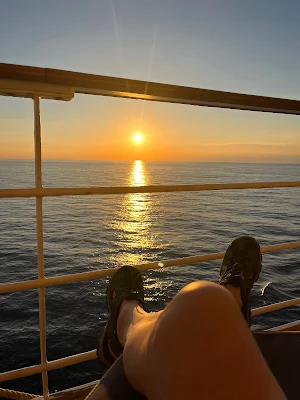





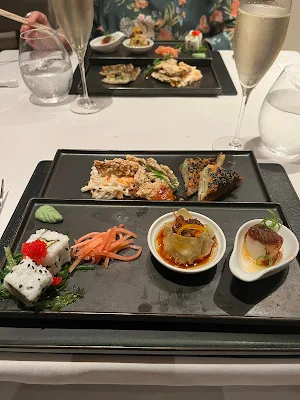
























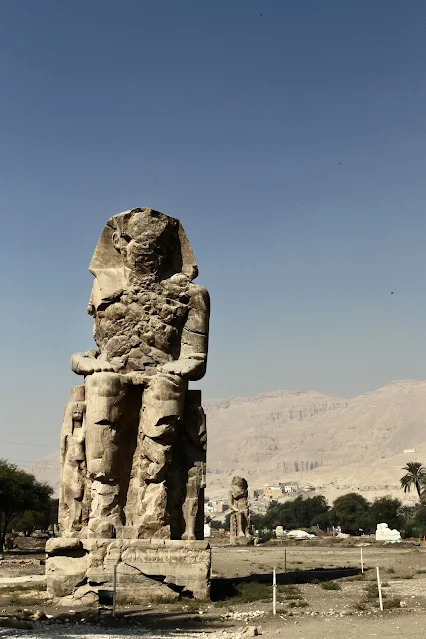










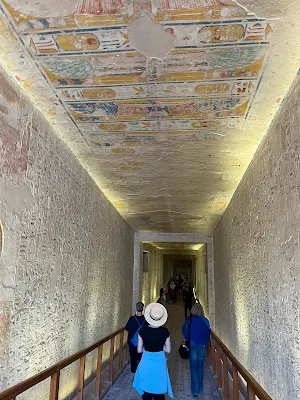



















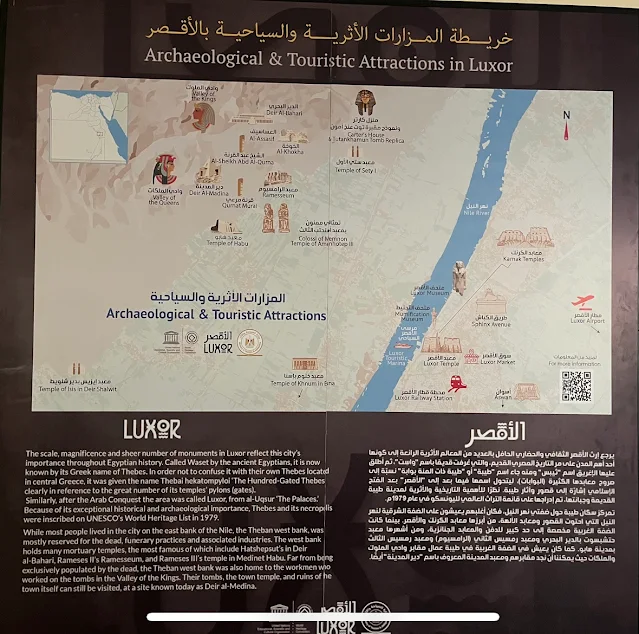




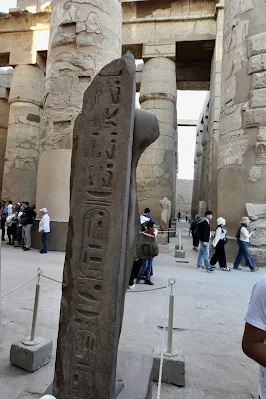
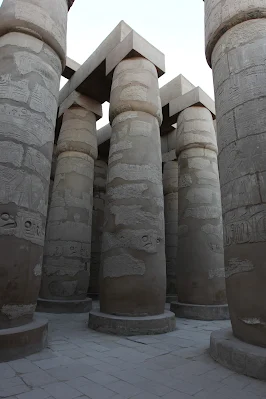










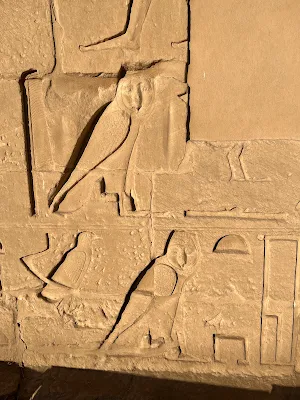



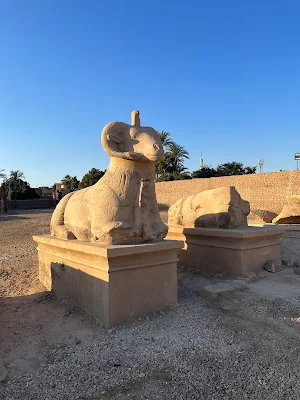



Comments
Post a Comment